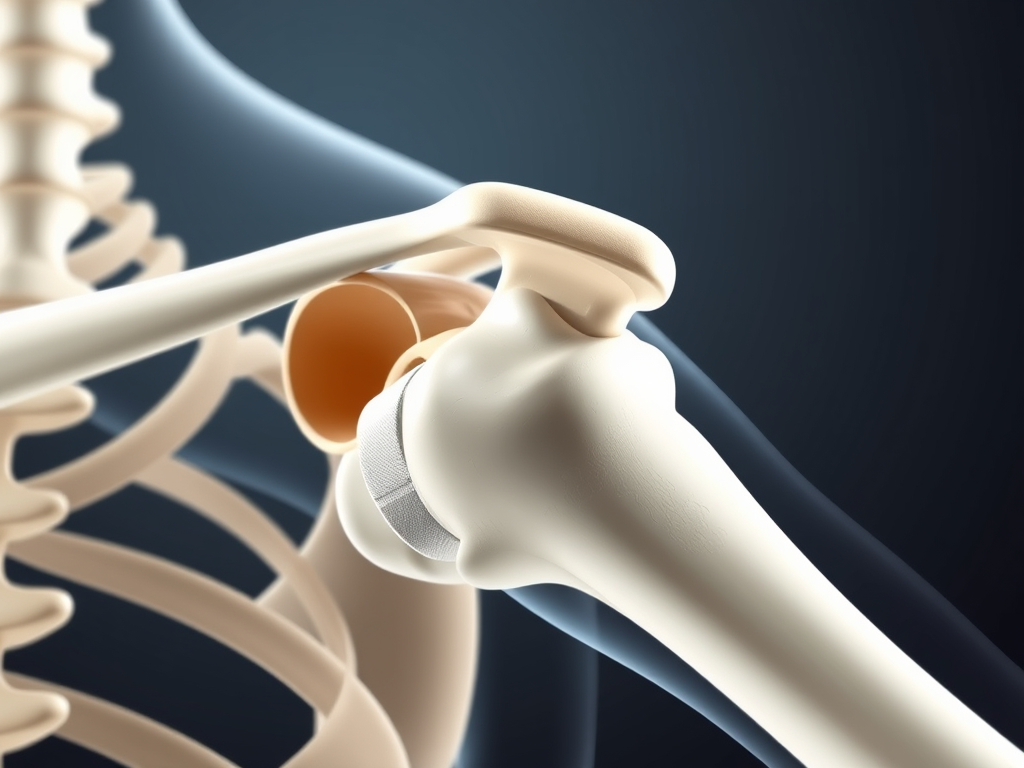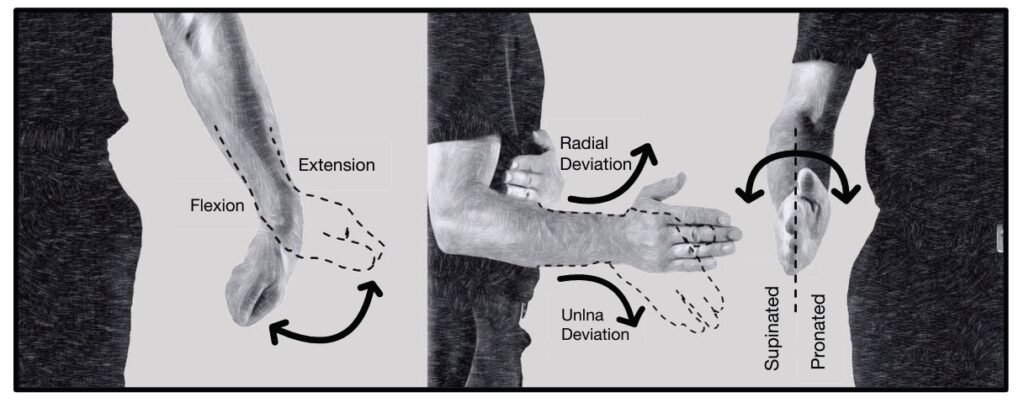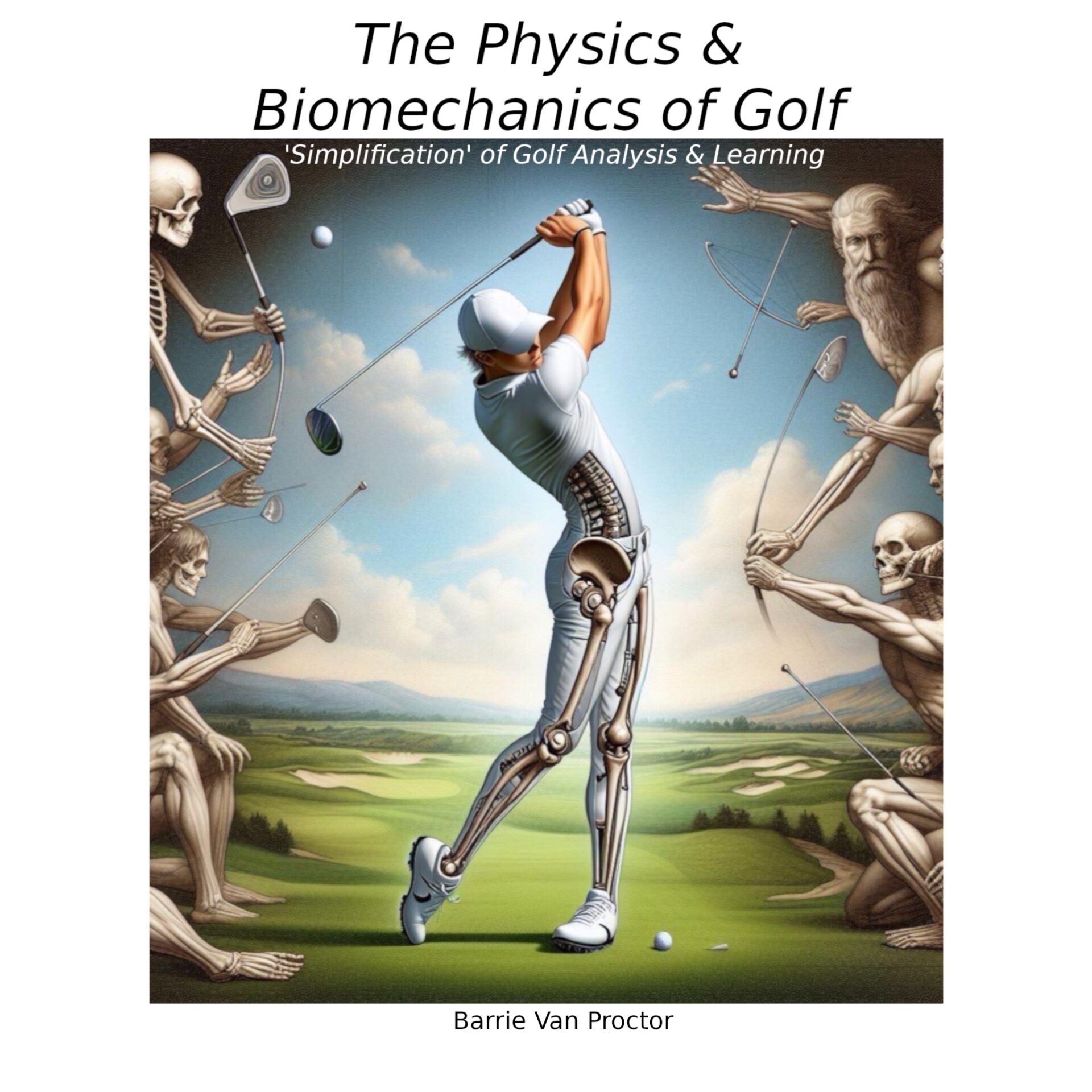Your basket is currently empty!

The Hands in the Golf Swing Part 3
Lag and Impact Conditions
Generally lag, clubhead path & speed, together with angle of attack are the most critical variables at impact. They are neither the complete, nor formal definition of ‘impact conditions’ but are key to biomechanics consideration. Of these the first, ‘lag’ has a uniquely simple biomechanics origin.The mechanics of lag are commonly misidentified as wrist flexion / extension (‘cocking and uncocking’), which is incorrect.
‘Radial deviation (in trail and lead wrists) is actually the primary source of lag.’
In the previous parts, ulna and radial deviation have been demonstrated as a key component of the takeaway. At impact, considering the forces involved, the trail wrist may also be in extension. But this is more a buffering type reaction to centripetal force. Significant wrist extension will yield excessive ‘opening’ of the clubface (aiming to the right of path, for right-handed golfers).

Wrist extension / flexion, is as with supination / pronation (see ‘The Hands in the Golf Swing Parts 2’). That is, these articulations or ‘degrees of freedom’ should be autonomous and primarily reactionary. They should function as a ‘shock absorber’ or buffer, in assistance to the source of a particular motion. Femoral / shoulder articulation, for example. Typically the wrists get involved throughout the swing way beyond what is necessary. Mainly this is because of incorrect conceptual understanding, or else to compensate for incorrect mechanics. Sometimes the are also initiated when the CNS ‘realises’ something to be dynamically amiss on the way into impact.
Extraneous wrist involvement usually results in an unmanageable clubface to path relationship and / or incorrect ‘low point’. These errors can destroy ‘compression’ onto the ball and thus spin. They can turn a 6 iron, into an 8 iron via excessive dynamic loft presented to the ball. Compression can be quite difficult to appreciate from the first person. If the sensation of compression is alien to you, the best I can say is the following. Every so often you may hit a shot that feels and sounds different. It may feel effortless relatively speaking, has a different flight, lower apex and carries further. You have probably accidentally delivered the club with close to ideal lag, angle of attack and low point. In doing so you will have compressed the ball adequately.
‘Sequencing is probably the single most important factor in golf biomechanics.’
It is key to the principle of ‘summation of force’, whereby the resultant (e.g angular velocity of the hands) is the sum of correct sequencing of the individual articulations involved. There is much involved in sequencing correctly. The topic spans many of the chapters in‘The Physics and Biomechanics of Golf’ in way way or another. Essentially without sufficient energy being passed through the hands to the clubhead, there will be inadequate clubhead momentum. There will also be little for the hands to offer up, in terms of opposing pressure and maintaining lag.
Early extension is extremely difficult to avoid if sequencing is incorrect. Early extension kills angular velocity and also raises the low point. This causes the wrist to shed radial deviation too early. This is done to try to keep the club moving in the absence of adequate pivot. It may also be required simply in order to reach the ball. So where does all of this lead us? Well, it is the following.
‘A lack of understanding of the biomechanics and physics involved, leads to unnecessary complexity.’
Most faults in the golf swing seem to be over-complications. Or put another way more conceptual understanding equates to less mechanical complexity. The key takeaways for the hands then are as follows:
‘Generally, conscious articulations in the wrist and hands should be avoided
Radial deviation is set at address. It may automatically increase in transition and decrease, or go into ulna deviation into impact. The extent to which this happens should be determined principally by impact conditions and momentum, but not conscious application. Remove wrist articulations from your takeaway to the greater extent. Concentrate on upper arm (humeral) rotation within the shoulder sockets instead. I recommend focusing on external rotation of the trail arm. The lead arm will internally rotate on its own to complement this.
I hope you found this three part series of some value, or at least found some interest therein. One’s understanding of these topics tends to be inversely proportional to the simplicity of actual dynamics of motion developed. If you haven’t yet done so, please consider acquiring a copy of the book. If you have any questions about swing mechanics, feel free to get in touch. Don’t forget to subscribe to our blog for ongoing free content.
Have a fantastic and New Year.
Discover more from golfbiomechanics.net
Subscribe to get the latest posts sent to your email.

Leave a Reply